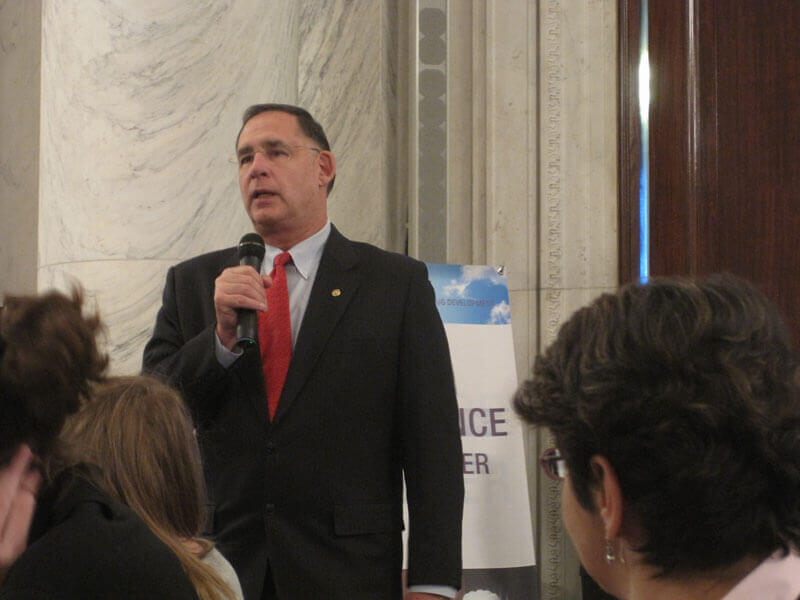Emily HalnonGHTC
Emily Halnon is a communications associate at GHTC.
Emily Halnon is the Communications Associate at GHTC. Below is her reaction to Sustaining progress: Creating US policies to spur global health innovation, the third annual briefing hosted by GHTC.
After attending GHTC’s annual briefing yesterday, it is nearly impossible, and arguably fully impossible, to come up with any reason as to why the US should not invest in global health research and development (R&D).
The four panelists at the event, representing a range of US agencies and global health organizations, were full of countless examples that show what a remarkable difference US leadership in global health R&D has made around the world.
The most obvious impact that this leadership has had is through saving millions of lives around the world through the development of health tools like drugs, vaccines, and diagnostics. As Kemy Monahan, the deputy executive director of the Global Health Initiative and one of the panelists, said: US investments in global health R&D have saved “not just a few lives, [but] lots of lives.”
Kevin De Cock, the director of the Center for Global Health at the US Centers for Disease Control and Prevention, stressed that due to the “indivisibility of domestic and foreign health,”investing in global health R&D is not just benefiting communities in remote regions overseas. It also improves the health of Americans and protects people all around the world from infectious diseases.
Col. Peter Weina, deputy commander of Walter Reed Army Institute of Research (WRAIR), reinforced the importance of global health R&D in our borderless society by listing numerous ways that WRAIR’s R&D successes—from producing the first influenza vaccine to starting work on almost every antimalarial in existence—have helped protect US troops from infectious diseases like malaria and leishmaniasis, and in turn, every community they reach across the globe.
A theme that resonated through the message that every panelist delivered was the importance of US agency collaboration. Kemy Monahan emphasized the success that has come from the GHI encouraging US agencies to work together to maximize results. And Marc LaForce, the Director of the Meningitis Vaccine Project, talked about how MenAfriVac, a meningitis vaccine that is already saving countless lives in Africa, was made possible through the collaboration of several US agencies, including CDC, the National Institutes of Health, the US Agency for International Development, and the Food and Drug Adminstration. Marc also stressed the critical need for US funding to see this work to the finish line: “with sufficient funding, this epidemic is likely to be pretty much over in the next 10 years.”
The speakers and Karen Goraleski, Executive Director of the American Society of Tropical Medicine and Hygiene and moderator at the briefing, also stressed the numerous domestic benefits of global health R&D in addition to the millions of lives saved across the globe. These benefits include increased national security, economic growth, and job creation. Goraleski emphasized that healthy populations produce stable economies, and countries with stable economies have stable governments, leading to a more secure global community.
While there is no denying that this is a time of severe budget austerity, there was consensus in the room yesterday that investing in global health innovations is cost-effective and a smart decision for US policymakers.

When US Senator John Boozman (R-AR) addressed the audience, he emphasized how far we’ve come, and how critical coordination between US agencies has been. “We’ve made tremendous progress. Working together, we can be proud of our progress.”
As US policymakers consider whether to invest in global health R&D, they need to consider the countless achievements that yesterday’s speakers highlighted, and the fact that without a US commitment to the R&D needed to produce these lifesaving tools and technologies, many of these would not be possible.
Col. Weina closed his remarks by stressing that the US cannot “rest on the laurels” of the past accomplishments made to address global health threats. A continued investment in global health R&D is critical to ensure that we continue to produce the game-changing innovations that are saving lives, fueling our economy, and providing good jobs across America.